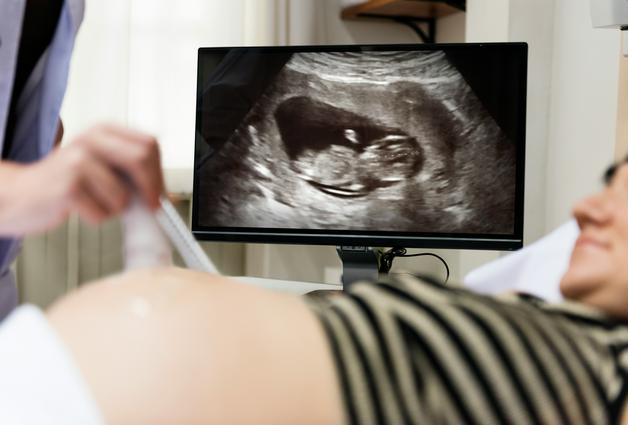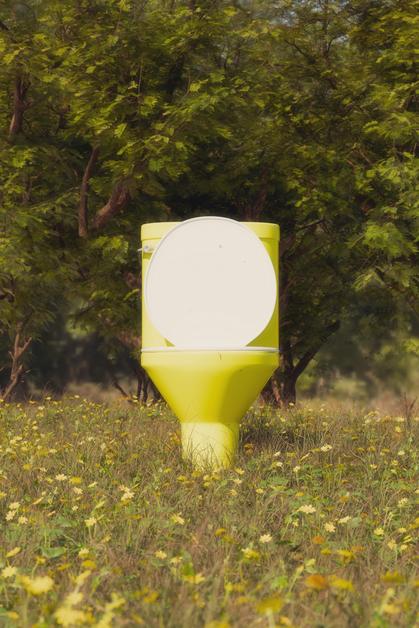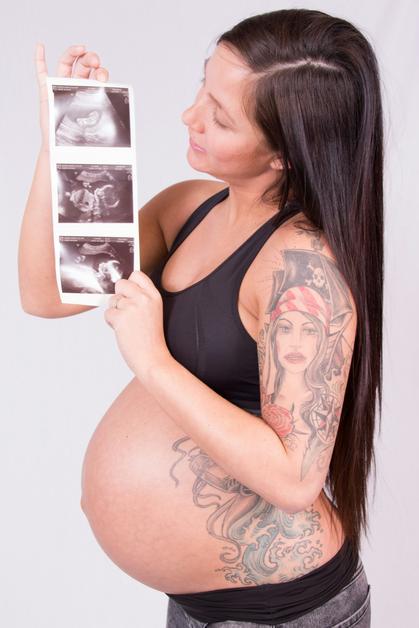The first glimpse of your baby—however tiny—is a moment that sits somewhere between overwhelming and unforgettable. For many expectant parents, dating ultrasound is more than a medical procedure: it marks the start of something undeniably real. Yet questions abound. What exactly can you expect from this scan? What do all those numbers, abbreviations, and gestures from the sonographer mean? Many parents are surprised by the intensity of their emotions and the complexity of the information. From pinpointing your baby’s gestational age to clarifying your “due date,” the dating ultrasound is there to bring scientific certainty—often where doubts or blurred memories of menstrual cycles exist. But, beyond accuracy, it’s also an encounter colored by reassurance, caution, occasional worry, and often joy. Here’s what every family deserves to know about the science, significance, and experience of the first dating ultrasound.
Understanding the dating ultrasound: purpose and emotions intertwined
What exactly is a dating ultrasound? Picture a short, focused scan—taking place between the 7th and 12th week of pregnancy—using ultrasound waves to measure your developing baby’s crown-rump length (CRL). The purpose: to provide a scientific assessment of gestational age, essentially how many weeks pregnant you really are (far more accurate than relying on period dates alone, which can be fuzzy if cycles are irregular or recently interrupted by contraception or breastfeeding).
But accuracy isn’t the only function. Detection of a fetal heartbeat, confirmation that the pregnancy is located inside the uterus (not an ectopic pregnancy), and screening for the possibility of twins or even more—all happen in a matter of minutes. For many parents, this “first look” brings an upwelling of excitement, but also anxiety. Is that tiny flicker really a heartbeat? Are the numbers on the screen normal? The medical data matters—but so, too, does the moment’s emotional impact.
Why is the dating ultrasound so valuable? The medical rationale
Let’s take a closer look at the science behind the dating ultrasound. Establishing the timeline of your pregnancy is the foundation for all subsequent prenatal decisions, both routine (when to schedule blood tests or vaccines) and exceptional (if additional surveillance is needed). By measuring the CRL, your healthcare provider calculates your baby’s gestational age—a key metric for predicting the estimated due date (EDD) with far less margin for error than traditional calendar methods.
Here’s where precision matters. Early scans allow professionals to:
- Confirm if there is a single pregnancy or if multiples are present.
- Assess the gestational sac’s placement, confirming that the embryo is located where it should be.
- Identify higher-risk scenarios—such as extra-uterine (ectopic) pregnancies—very early, often before symptoms escalate.
- Give specific attention to those with histories of irregular cycles, recent hormonal contraception, or uncertain conception dates.
If early complications arise—pain, bleeding, or just a “sense that something isn’t right”—the dating ultrasound’s images can offer both clarity and comfort or guide toward appropriate follow-up.
Optimal timing: when should the scan be performed?
Timing isn’t arbitrary. A dating ultrasound is generally recommended “between 8 and 14 weeks,” with most practitioners aiming for the 7–12 week window, when fetal development is uniform and measurements are most reliable (within a margin of ±3-5 days). In specific contexts—irregular periods, recent cessation of contraception, symptoms like bleeding or pain—a scan might be performed as early as the 5th week of amenorrhea (missed menstrual period).
Certain unique factors (prior pregnancy loss, known risk factors, or ambiguous symptoms) may prompt a sonographer to suggest earlier or repeated scans, especially if an initial attempt is too soon to visualize a heartbeat. If you receive a follow-up appointment, rest assured: developmental timelines vary, and sometimes that reassuring flicker simply needs a bit more time to emerge.
The science of imaging: technology and technique explained
Parents often worry about safety—questions are natural, given the stakes. Luckily, dating ultrasound employs high-frequency sound waves, not ionizing radiation, to form images of the uterus and embryo. In early pregnancy, a transvaginal scan offers sharper detail: a fine, lubricated probe is gently inserted into the vaginal canal (generally well tolerated, rarely painful), enabling close-up views of a very small fetus.
As pregnancy progresses, a transabdominal ultrasound—the more familiar handheld probe moved over your lower belly with gel—comes to the fore. The prime measurement? The renowned crown-rump length (CRL), taken in several views and averaged. This is why the first trimester scan is so much more precise than later scans, when fetal growth rates can diverge.
Practical tips: preparing for your dating ultrasound
Anticipation swirls before your appointment. To enhance image quality and comfort, skip applying oils or creams to your abdomen ahead of time—they can blur the view. Sometimes a full bladder aids abdominal imaging, but for a transvaginal scan, your practitioner may advise arriving with an empty bladder.
Choose comfortable clothing that allows easy access to your lower abdomen. Bring along your medical file and list any concerns for smooth communication. Feeling supported makes all the difference—most clinics welcome a partner, friend, or loved one during this emotionally charged step.
Unfolding the procedure: what actually happens?
A dating ultrasound typically lasts 15 to 30 minutes. If performed abdominally, your lower belly is exposed, a cool gel is applied, and the sonographer glides the probe methodically across your skin. For the transvaginal method, a thin, lubricated device is inserted gently—usually with minimal discomfort.
You might notice the sonographer concentrating deeply or making quick notations—each detail evaluates the embryo’s size, checks for the presence and rate of the fetal heartbeat, examines amniotic fluid, and investigates the placental position. On screen, the baby may be little more than a grain of rice, yet that flicker of a heartbeat—or confirmation of twins—can be life-changing.
Decoding results: what do the numbers mean?
The dating ultrasound report is precise, rich in abbreviations, and sometimes daunting. Here’s how to decipher it:
- CRL (crown-rump length): Main measurement, compared to international development charts.
- EDD (estimated due date): Projected childbirth date based on baby’s actual size, not calendar estimation.
- Fetal heartbeat: Its presence—and speed—serves as an index of typical early development.
- Viability: Confirmation of appropriate growth and visible heartbeat.
- Gestational sac & embryo count: Ensures the embryo is correctly positioned and notes if there is more than one baby.
Occasionally, the scan shows a pregnancy earlier than expected (“your dates may be off a little”). If heartbeat or growth aren’t yet visible, don’t panic—a repeat scan typically follows within 7 to 14 days. Development isn’t always linear, and early scans can miss features that appear just a week later.
Dating ultrasound versus first trimester screening: not quite the same
A quick clarification: confusion is common between a dating ultrasound and a first trimester scan (often called the nuchal translucency scan). While both use ultrasound, their objectives diverge:
- The dating ultrasound—ideally performed between 7 and 12 weeks—focuses on establishing pregnancy location, confirming the embryo count, and measuring gestational age.
- The first trimester scan (usually between 11–14 weeks) incorporates measurements like nuchal translucency—the clear space at the back of the baby’s neck—to screen for chromosomal anomalies, such as Down syndrome.
Understanding which scan you’re having (and why) can alleviate unnecessary worry and help you anticipate the scope and information provided at each step.
Precision and its limits: what the dating ultrasound can and cannot guarantee
Medical imaging isn’t infallible, but a first trimester dating ultrasound is exceptionally reliable—predicting gestational age to within about 3–5 days when performed in the optimal window. Results can be less accurate with multiples (twins, triplets), very early scans, or if maternal anatomy or fetal positioning obscure key views.
Routine offering of this scan can depend on personal medical history, date uncertainties, and symptoms—healthcare systems differ. If an ultrasound takes place too early, the embryo may simply be too small for key structures (like the heartbeat) to appear. In these cases, a repeat scan dispels doubt rather than generating alarm. Remember: each pregnancy establishes its rhythm—comparison has limited value.
Uses, science-backed advantages, and what parents stand to gain
Why undertake a dating ultrasound? For many, the benefits are concrete and emotional:
- Provides a reliable baseline for due date estimation and optimal prenatal scheduling.
- Detects the location of the gestational sac, helping rule out extra-uterine (ectopic) pregnancies.
- Evaluates the presence of multiples or early indicators of developmental anomalies.
- Allows early reassurance for parents anxious about unexplained bleeding, pain, or recent fertility treatments.
Yet the experience often transcends medical facts. Laying eyes on the first evidence of your baby can forge attachment and give concrete shape to your future as a parent—an often underestimated, yet no less vital, benefit.
Questions parents often ask: myth-busting and science-based answers
Is the dating ultrasound safe?
Absolutely. Non-invasive, using sound waves rather than radiation, a dating ultrasound has no known harmful effects on your baby or you. All precautions—sterile gel, expertly trained staff—are standard.
Unsure of your conception dates?
Nothing unusual. Irregular cycles, uncertain last period, or recent transition off hormonal contraception are very common reasons for confusion. The entire purpose of the dating scan is to clarify your gestational age and provide an objective timeline. Should doubts persist or if repeat scans suggest adjustments, your professional may suggest further testing or follow-up ultrasounds.
Can the baby’s sex be revealed at this stage?
No—the dating ultrasound’s focus is purely on growth, viability, and location. The morphology scan, usually around the 20th week, is where questions about sex can be answered more reliably. Curiosity is natural; patience is, for now, the necessary companion.
Key Takeaways
- The dating ultrasound stands as the most accurate tool for determining your pregnancy’s age and expected due date in the first trimester.
- Safe and non-invasive, it provides reassurance, clarity, and early detection of key factors like heartbeat, fetal position, and the possibility of multiples.
- If questions remain after the first scan, follow-ups and supplementary testing ensure thorough assessment—no need for undue anxiety.
- The emotional impact is valid—bring support, embrace your feelings, and engage your healthcare provider openly.
- Every pregnancy’s journey is singular; what matters most is feeling informed and empowered, surrounded by professional guidance tailored to your situation.
To go further and access personalized health resources or free questionnaires tailored for your child, discover the Heloa app: solutions, empathy, and expertise, always at your fingertips.
Questions Parents Ask
Can a dating ultrasound detect twins or multiple pregnancies?
Yes, dating ultrasounds can often reveal if you are expecting more than one baby. The ultrasound allows your healthcare provider to see how many embryos or gestational sacs are present. Detecting twins or multiples early is important because it permet de mieux suivre la progression de la grossesse et d’adapter l’accompagnement médical si besoin. Si une surprise se présente avec plusieurs bébés à l’écran, sachez que c’est tout à fait normal de ressentir des émotions variées – joie, questionnements, voire une certaine inquiétude. Rassurez-vous, les professionnels sont là pour répondre à vos questions et vous accompagner à chaque étape.
Why might a dating ultrasound be recommended earlier than usual?
A dating ultrasound is sometimes suggested earlier—dès la 6ème semaine—si vous présentez certains symptômes tels que des douleurs, des saignements ou si la date de vos dernières règles est incertaine. Cela peut aussi concerner les personnes ayant des antécédents de fausse couche, des cycles très irréguliers ou après des traitements de fertilité. L’objectif est alors d’apporter une information rapide et de réagir au mieux selon la situation. Si vous vous trouvez dans cette situation, n’hésitez pas à poser toutes vos questions et à exprimer vos ressentis : chaque situation est unique et mérite une attention particulière.
How much does a dating ultrasound typically cost?
The cost of a dating ultrasound can vary greatly depending on where you live, the type of facility, and your healthcare coverage. In some cases, it may be fully or partially covered by health insurance or national healthcare systems, especially if prescribed by your doctor for medical reasons. N’hésitez pas à demander un devis ou à vérifier auprès de votre assurance ou de la clinique avant le rendez-vous. Si le coût représente une préoccupation, il existe parfois des solutions ou des aides adaptées à chaque situation. Soyez assuré que les professionnels de santé ont l’habitude d’accompagner toutes les familles avec bienveillance.

Further reading:









